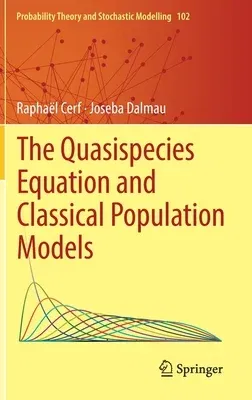Raphaël Cerf
(Author)The Quasispecies Equation and Classical Population Models (2022)Hardcover - 2022, 31 July 2022

Qty
1
Turbo
Ships in 2 - 3 days
In Stock
Free Delivery
Cash on Delivery
15 Days
Free Returns
Secure Checkout

Part of Series
Probability Theory and Stochastic Modelling
Print Length
242 pages
Language
English
Publisher
Springer
Date Published
31 Jul 2022
ISBN-10
3031086627
ISBN-13
9783031086625
Description
Product Details
Authors:
Book Edition:
2022
Book Format:
Hardcover
Country of Origin:
NL
Date Published:
31 July 2022
Dimensions:
23.39 x
15.6 x
1.6 cm
Genre:
Ecology
ISBN-10:
3031086627
ISBN-13:
9783031086625
Language:
English
Location:
Cham
Pages:
242
Publisher:
Weight:
530.7 gm